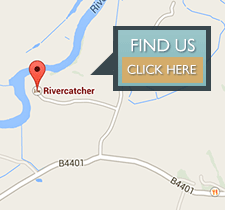Discover Welsh wildlife all year round
Rivercatcher is situated in the village of Llandrillo which sits in the centre of the picturesque Dee Valley, regarded as one of the UK’s premier birdwatching and wildlife locations.
If you are looking for bird watching in North Wales, the Dee Valley is teaming with diverse wildlife, showcasing the region’s rich biodiversity and providing a haven for both native and migratory species.
All of these fantastic photos have been taken by Gordon Yates, a regular visitor to Rivercatcher, either from the grounds, in the Dee valley or nearby Berwyn Mountains.
Here’s a glimpse into the wildlife you might encounter whilst staying with us here at Rivercatcher.
SPOTTER’S GUIDE
From the comfort of your cottage or log cabin
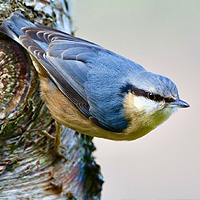
NUTCHATCHES More about Nuthatches
Description: Short tailed with a grey and chestnut plumage
Where to see me: Tree trunks and bird feeders
When to look: Year round
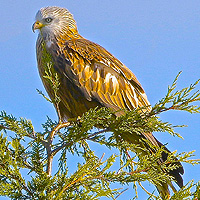
RED KITES More about Red Kites
Description: Reddish plumage with a long forked tail
Where to see me: Soaring and wheeling in the sky
When to look: Warm sunny days
Down by the river
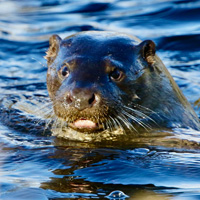
OTTERS More about Otters
Description: Elongated bodies, long tails and soft, dense fur
Where to see me: A quiet stretch of the river
When to look: 2 hours before dusk
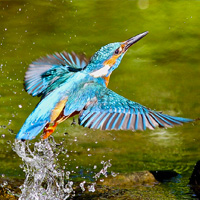
KINGFISHERS More about Kingfishers
Description: Bright metallic blue with a coppery-brown breast
Where to see me: Above shallow slow moving water
When to look: Early in the morning
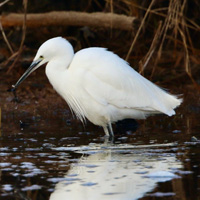
LITTLE EGRETS More about Little Egrets
Description: Like a small white heron
Where to see me: Wading in shallow water
When to look: All year with more in autumn and winter
The nearby Berwyn Mountains
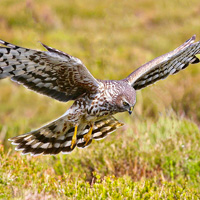
HEN HARRIERS More about Hen Harriers
Description: Ghostly grey male and brown & white female
Where to see me: Upland heather moorland
When to look: March to August which is breeding season
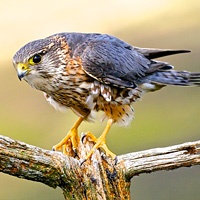
MERLINS More about Merlins
Description: A small falcon, the smallest UK bird of prey
Where to see me: Heather moorlands flying low to the ground
When to look: During the winter
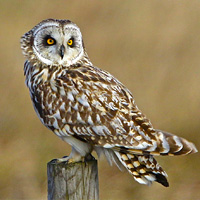
SHORT EARED OWLS More about Short Eared Owls
Description: Mottled yellowy-brown with a pale underneath and dark circles around yellow eyes.
Where to see me: Heather moorlands
When to look: Daytime!
The surrounding area
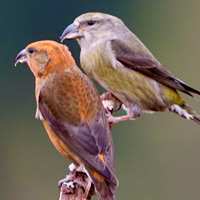
CROSSBILLS More about Crossbills
Description: Red or Oliver-Green with a distinctive crossed bill
Where to see me: At the very top of pine trees and in conifer woodland
When to look: All year round
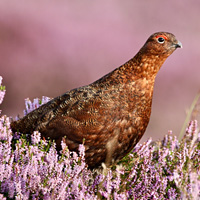
RED GROUSE More about Red Grouse
Description: Medium-sized, reddish-brown game bird
Where to see me: Upland heather moorlands close to Rivercatcher
When to look: Year round
Nuthatches
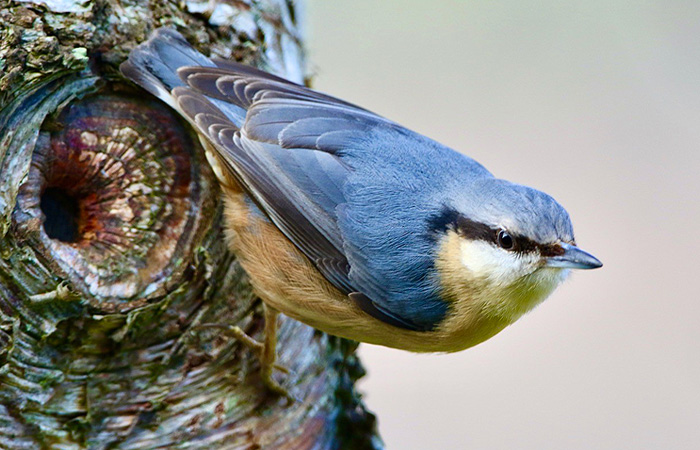
There is only one species of Nuthatch in the UK. These birds resemble Woodpeckers as they clamber about on trees. However, they are easily distinguished by their short tails and their grey and chestnut plumage.
Nuthatches are primarily insectivorous, preferring caterpillars, beetles and other insects found on the trunks and branches of trees. Acorns, nuts, beech mast, and seeds become increasingly important in the winter when invertebrates are less abundant. If you are hoping to catch a glimpse of one then your chances may be greater in winter when food is more sparse and then tend to feed from bird feeders.
If you are looking at bird watching north wales and would like to do it in comfort Cilan Farmhouse has the perfect outlook to many of our larger trees and birdboxes.
FACT
The Nuthatch has a clever way of cracking tough nuts. It wedges them into small crevices and then pecks at them to gain access. They also store excess food in cracks and crevices for leaner times.
Red Kites
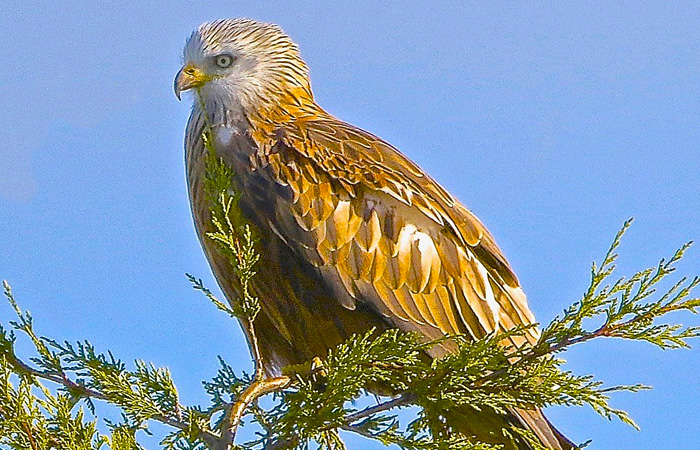
Red kites can be identified by having a rusty reddish-brown body with a deeply forked tail. The red kite is a scavenger and eats mostly carrion, road kill and worms. If necessary it will sometimes catch small live prey, such as voles, mice and birds.
Once confined only to Wales, the red kite is slowly returning to other parts of the UK. They are now easily spotted in the Chilterns and central Scotland, and are spreading across much of southern England. If your looking for a Red Kite around Rivercatcher then day time is your best bet as they are most active during the day. Look for them soaring on warm sunny days where their distinctive forked tail and wheeling flight is on show.
FACT
As monogamous birds, mating pairs will return to the same nests each season, adding new material to them during the breeding period.
Otters
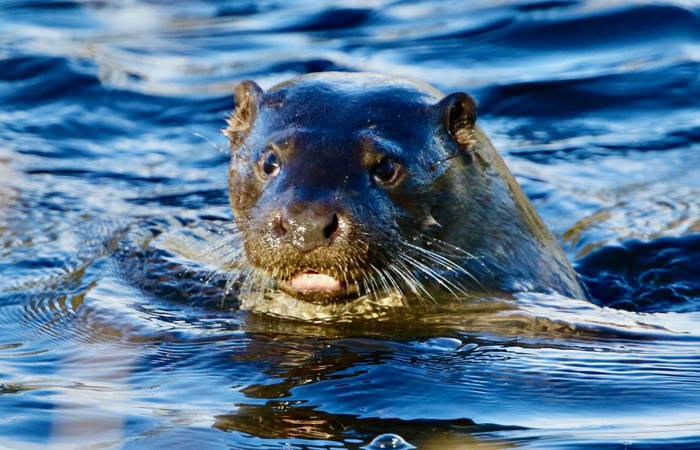
The charismatic otter, a member of the weasel family, is found on every continent except Australia and Antarctica. Most are small, with short ears and noses, elongated bodies, long tails, and soft, dense fur.
Though most live in freshwater rivers, lakes, and wetlands, the sea otter and the smaller marine otter are found in the Pacific Ocean. Otters are expert hunters that eat fish, crustaceans, crayfish and frogs.
To maximize your chances of spotting an otter here at Rivercatcher find a quiet stretch of river where they’re unlikely to be startled away. The best time of day is 2 hours before feeding which is usually between dusk and dawn.
Want the perfect place close to the river to start your search? Try Flyfisher’s Cottage.
FACT
River otters don’t breed until they are at least 5 years old.
Kingfishers
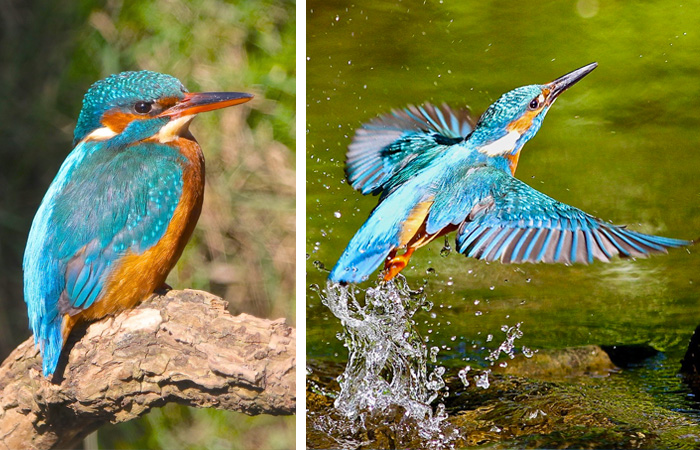
The kingfisher is a small bird with unmistakable plumage. Its back is bright metallic blue and its breast a coppery-brown. They are lightening fast you can usually spot them diving low to catch little fish with impressive dexterity.
From fish to newts, shrimps to aquatic insects, kingfishers have a fairly varied diet. Kingfishers don’t migrate abroad, so they’ll be present on our waterways all year round. However, April – August is when you’re most likely to see one. This is during and after breeding season when they’ve got more mouths to feed. Keep an eye out early in the morning, Kingfishers need to eat regularly so often wake hungry and head out straight away in search of food. They also prefer areas where they can easily see activity below the water – so shallow, slow-flowing spots are also a good idea if you want to spot one of these extraordinary birds.
FACT
Kingfishers have a nictate membrane which closes over the eye to protect it when they dive into the water.
Little Egrets
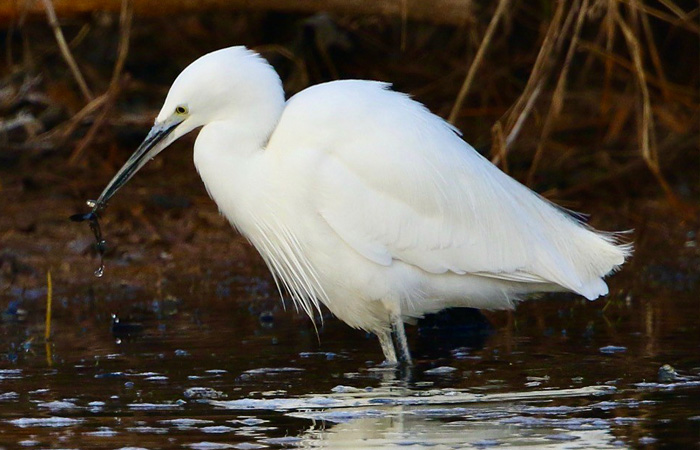
The little egret is a small, white heron that feeds on small fish and crustaceans.
Little egrets can be seen all year round in the UK and their numbers increase during autumn and winter with birds arriving from continental Europe.
FACT
The long neck plumes of little egrets were once more valuable than gold and were smuggled into Europe during the 19th century. As a result, little egret populations plummeted until laws were put in place to protect them.
Hen Harriers
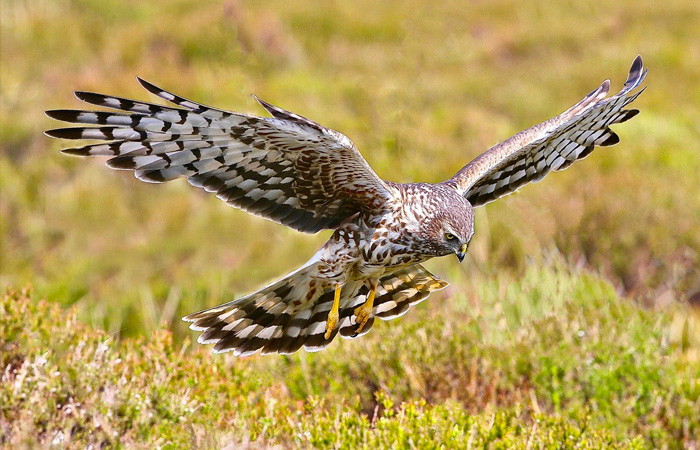
The beautiful, ghostly grey male and the brown/white-rumped female Hen Harrier are birds of wild places, upland moorland in the summer and coastal marshes during the winter. Hen harriers are one of the rarest birds of prey and has been protected since the 1950s.
The hen harrier lives in open areas with low vegetation. In the breeding season UK birds are to be found on the upland heather moorlands of Wales, Northern England, Northern Ireland and Scotland (as well as the Isle of Man). In winter they move to lowland farmland, heathland, coastal marshes, fenland and river valleys. The best time to see a Hen Harriers around Rivercatcher is during the breeding season, which runs from March to August. During this time, the birds are busy defending their territories and raising their young, making them more visible in the countryside.
If you’d like some extra bird watching adventures try one of the many local bird watching excursions
FACT
The name hen harrier comes from the bird’s former habit of preying on free range foul.
Merlins
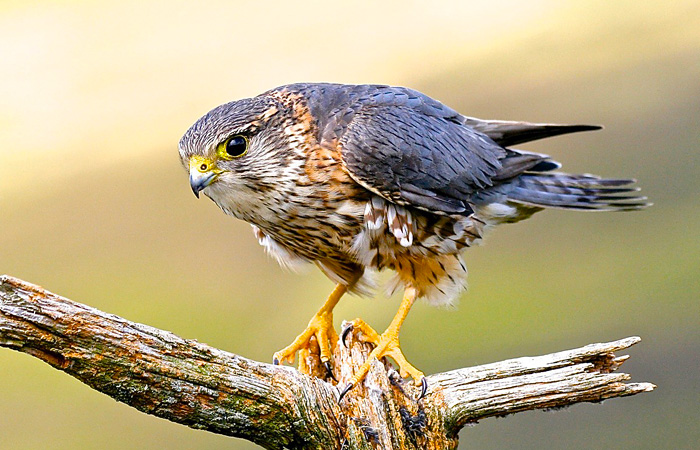
The Merlin is a small species of Falcon, it is the UK’S smallest bird of prey. It chases small birds, flying low to the ground or being able to hover in the breeze because of its small size.
The Merlin can be seen more in winter the UK population increases as most of the Icelandic breeding birds migrate to our warmer climate. Although recovering from a population crash in the late 20th century it is on the Red List so seeing a Merlin in the wild is a real treat. It is this kind of spectacular opportunity that makes bird watching North Wales so rewarding!
FACT
They nest on the ground, among the heather.
Short Eared Owls
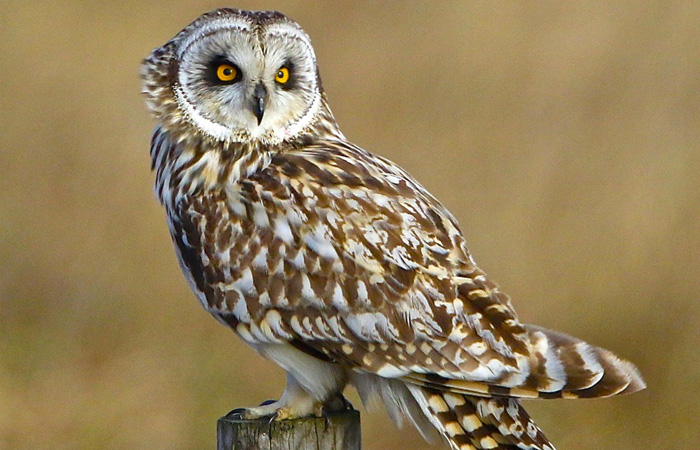
The short-eared owl is mottled yellowy-brown above, paler underneath and has dark circles around its yellow eyes. Short ‘ear tufts’ provide its common name.
They eat small mammals especially voles. In winter, there is an influx of continental birds (from Scandinavia, Russia, Iceland) to northern, eastern, and parts of central southern England, so around this time you will have a better chance of seeing them around Rivercatcher.
FACT
Unusual because it likes being out in the daytime.
Crossbills
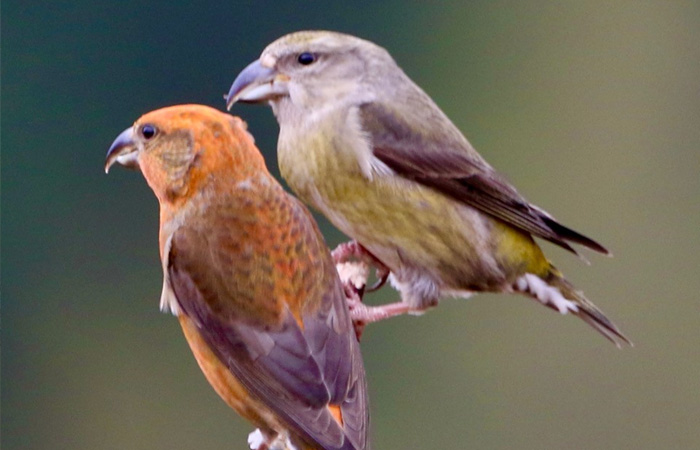
The common crossbill is a large finch of conifer woodlands, so-named for its bizarre, cross-tipped bill, which it uses to prise out and eat the seeds from pine cones. It feeds by flying from cone to cone, and can often be seen in larges flocks near the treetops, although it regularly comes down to pools to drink.
It is resident all year-round. Crossbills nest in conifer trees, constructing small cups out of twigs and moss, and lining them with hair.
The common crossbill is difficult to spot as it spends most of its time at the top of pine trees. It has a distinctive crossed bill and forked tail; males are brick-red, females olive-green, with a yellow rump.
FACT
Common crossbills nest very early in the year, hatching their chicks in February and March to take advantage of the new crop of pine cones.
Red Grouse
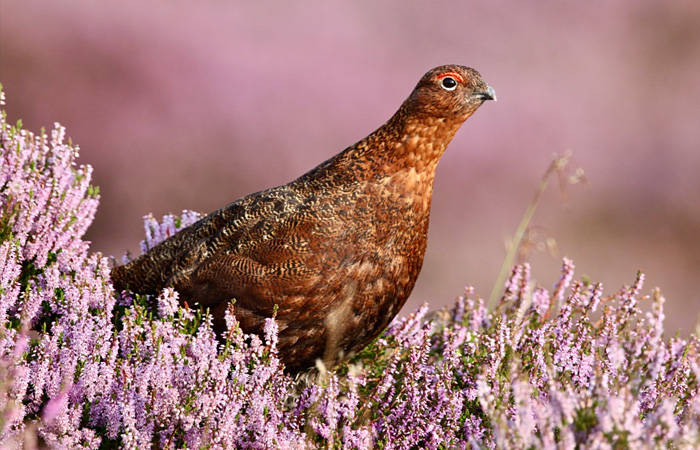
The red grouse is a medium-sized game bird. It has a short tail and a lightly hook-tipped bill. It is reddish-brown with its legs and feet covered in pale feathers.
They eat Heather, seeds, berries and insects and the best place to see them is on upland heather moors a short walk from Rivercatcher, where they suddenly rocket up from the heather when disturbed to fly off with fast-whirring wing beats. The Red grouse is a resident all year round and they travel very little during their lives so you have a great chance of seeing one if you are out and about walking. Rivercatcher is the perfect place for bird watching North Wales
FACT
The red grouse is in fact the ‘famous grouse’ that is pictured on whiskey bottles.









